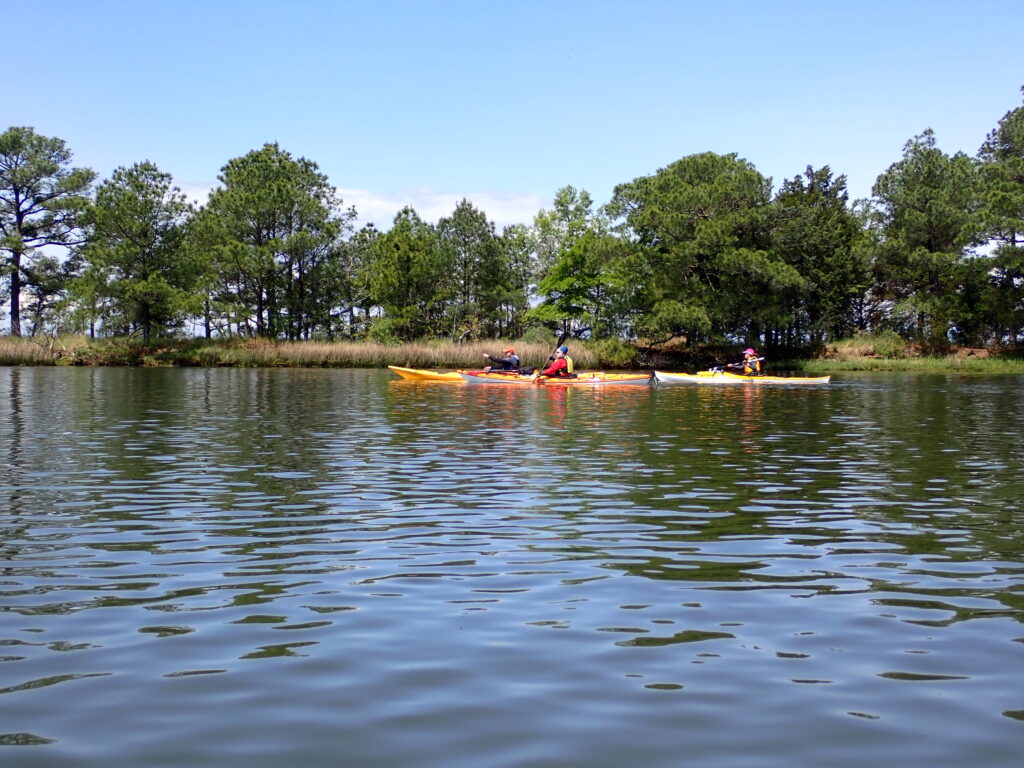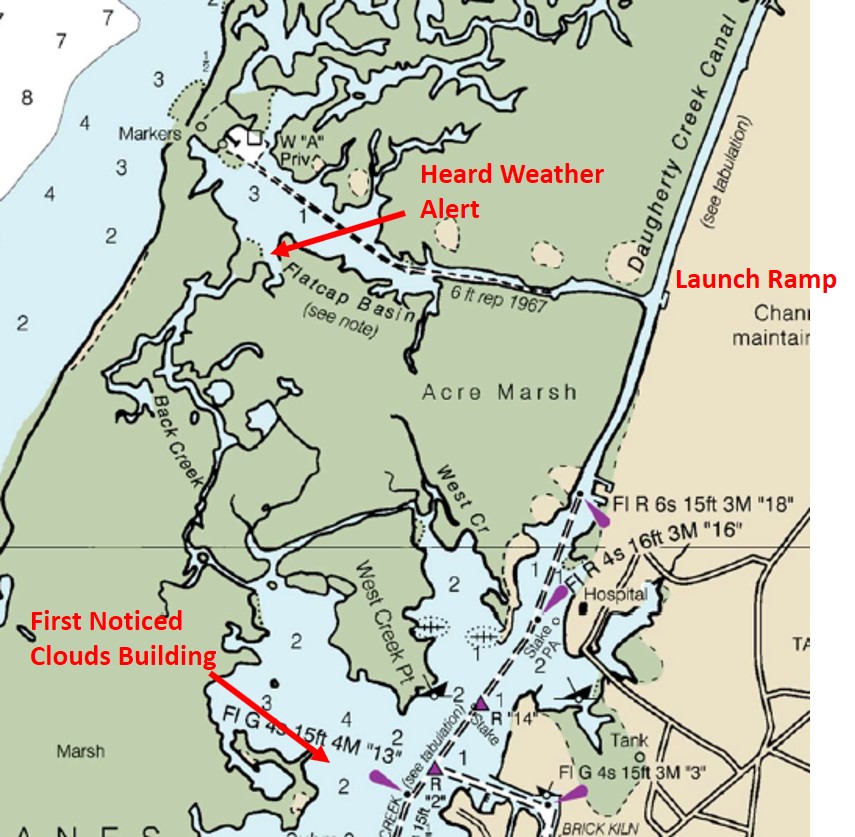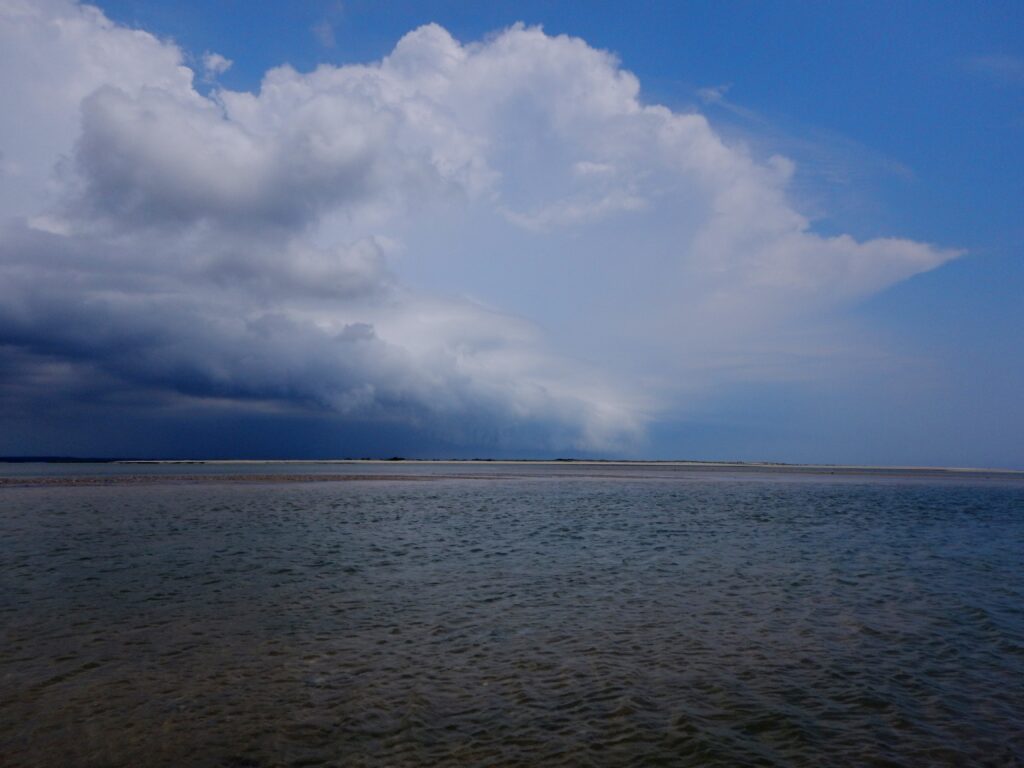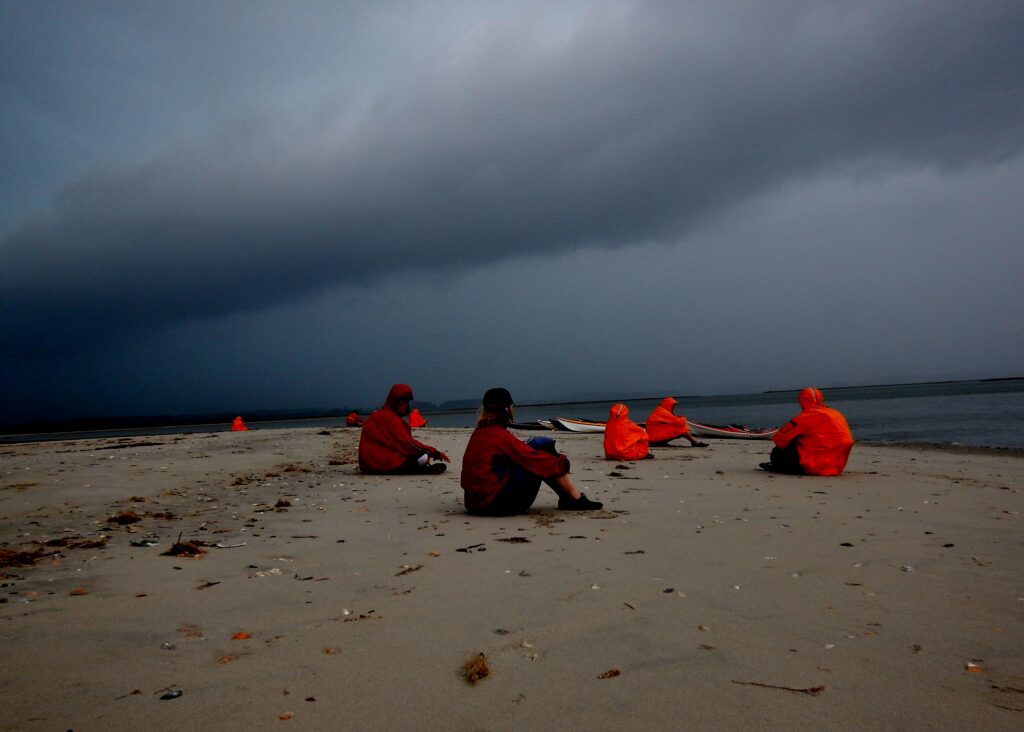Coordinators Column
It’s late spring and getting close to summer, and the paddling season has already started. There are a few things we need to remember. First, the air is warming but the water temperatures are still low. Especially since we have had several days of rain, most of which seems to have happened on the weekends. This will hold the water temperatures down.

So far, temperatures are still in the low 60s, cold enough be uncomfortable and to potentially cause hypothermia if the paddler does not get out of the water quickly and get dry. Cloudy, rainy and cool days make this even more likely. We are still saying dress for the water temperature, not the air. Practice rescues so that you can get back into your boat in the event that you find yourself swimming.
Summer also brings the potential for thunderstorms, and these storms present an additional hazard when paddling.
Our group was paddling at Janes Island, near Crisfield, Maryland and practicing navigation skills. The day had started stormy with thunder and lightning, but the storm was moving quickly and the weather radar apps on our phones showed it moving out and clearing by 11 AM. The afternoon was predicted to remain clear. We waited until 11 to launch and started our paddle through the marshes. The sky was clear, winds were calm, and the water was flat. We set off on our journey looking forward to a great time on the water.

About an hour into our paddle, I looked up at the sky and saw what appeared to be storm clouds building to our west. We checked the weather apps and saw that some storm cells had come up and were moving in our direction. No lightning was detected and the forecast was now for light rain starting in about another hour.
We decided to continue knowing that we would have another place where we could make the decision to go back to the ramp or continue on our paddle. We continued to watch the clouds build, monitored the weather channel on our VHF radios, and watch the weather radar on our phones. We paddled slowly, looking at the scenery, checking the charts for our location and were just enjoying the day when we heard a weather alert on our radios. Decision made, back to the ramp.
The factors that we included in making the decision to cut the paddle short and return to the launch included the people paddling, there were several novices and if winds picked up, some might have trouble paddling. We also looked at equipment, some people did not have good rain gear. It was still cool and if we had to get off the water in the marsh due to lightning it would be very uncomfortable.

We paddled back to the launch ramp, just as some light rain started. We noticed that the wind picked up bit not enough to make paddling back a challenge. Then of course, as we were getting off the water and loading boats, the sun came out again. That lasted for about 10 minutes. As we were finishing talking about the weekend, there was a gust of wind, rain started coming down sideways, and there were even a few minutes where it seemed like there was some small hail. No one regrated the decision to turn back early.
How can we tell storm clouds from fair weather clouds? Watch for vertical development, clouds that billow upward, as a storm can follow. If the atmospheric conditions are favorable, a towering cumulus cloud like this can develop into a powerful thunderstorm within an hour. This is what I was observing when I first noticed clouds building. Look at the color, there is a lowered cloud base with a threatening bluish-black underside.
We watch the weather forecast, but the weather doesn’t always read what is predicted. We are much better at predicting weather and we have tools that we can use to monitor weather, but conditions can change rapidly. Be aware of changes in the environment, changes in wind or clouds building. Be ready to change your plans if weather comes in unexpectedly. Make decisions sooner rather than waiting for a storm to strike. It’s OK to error on the side of safety.

What do you do if you are caught in a storm and can’t make it back to your take-out point? If it’s just wet, no thunder and lightning you can keep paddling. You will get wet and it may not be fun but it is generally safe enough. But if there is lightning or you hear thunder, first, get off the water and on to hopefully dry land. Stay low, and minimize your contact with the ground. Sit on your PFD. Separate.
Always bring rain gear, even if it seems like a beautiful, hot summer day. Its better to carry it and not need it than need it and not have it. Storms can drop the air temperature rapidly. Rain may be cold. Wind can make it feel even colder.

So happy paddling as days get warmer and afternoon thunderstorms seem to be in the forecast almost every day. Stay safe.
Paula Hubbard
CPA Coordinator.
Share This